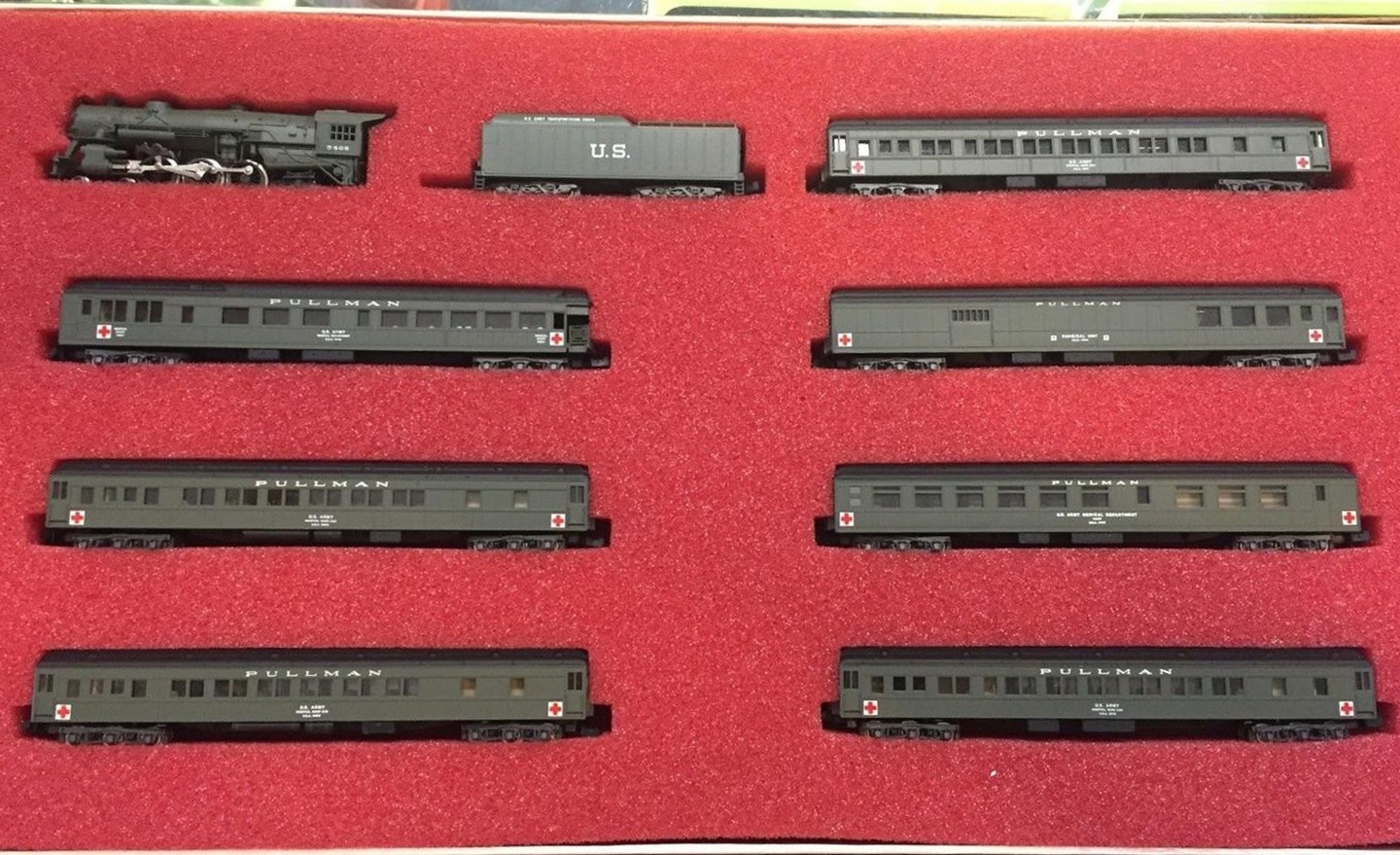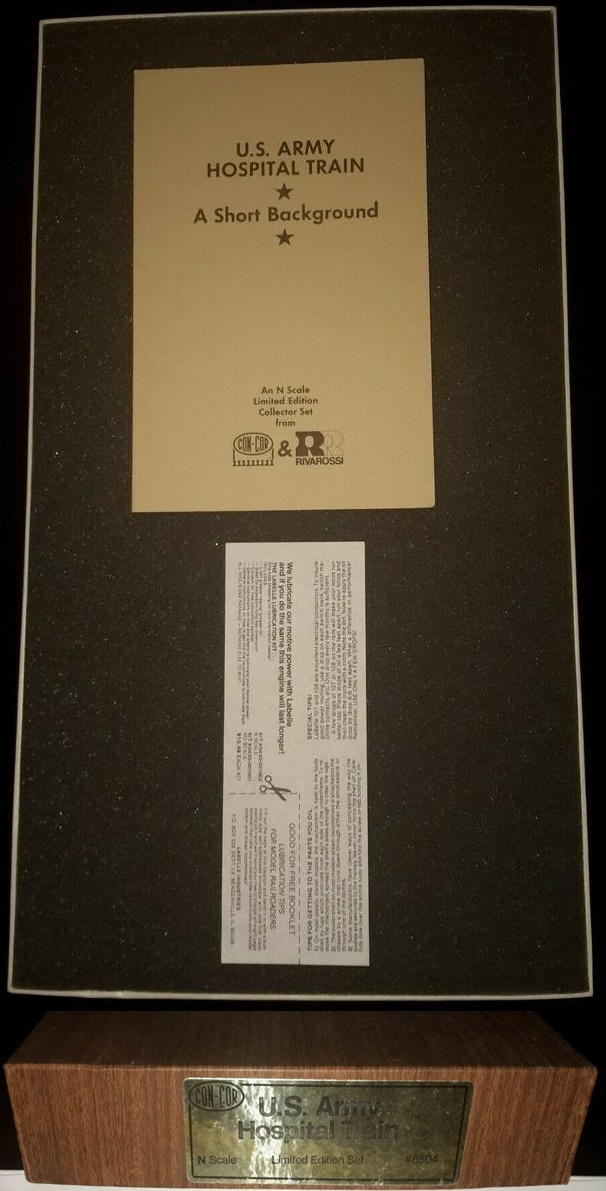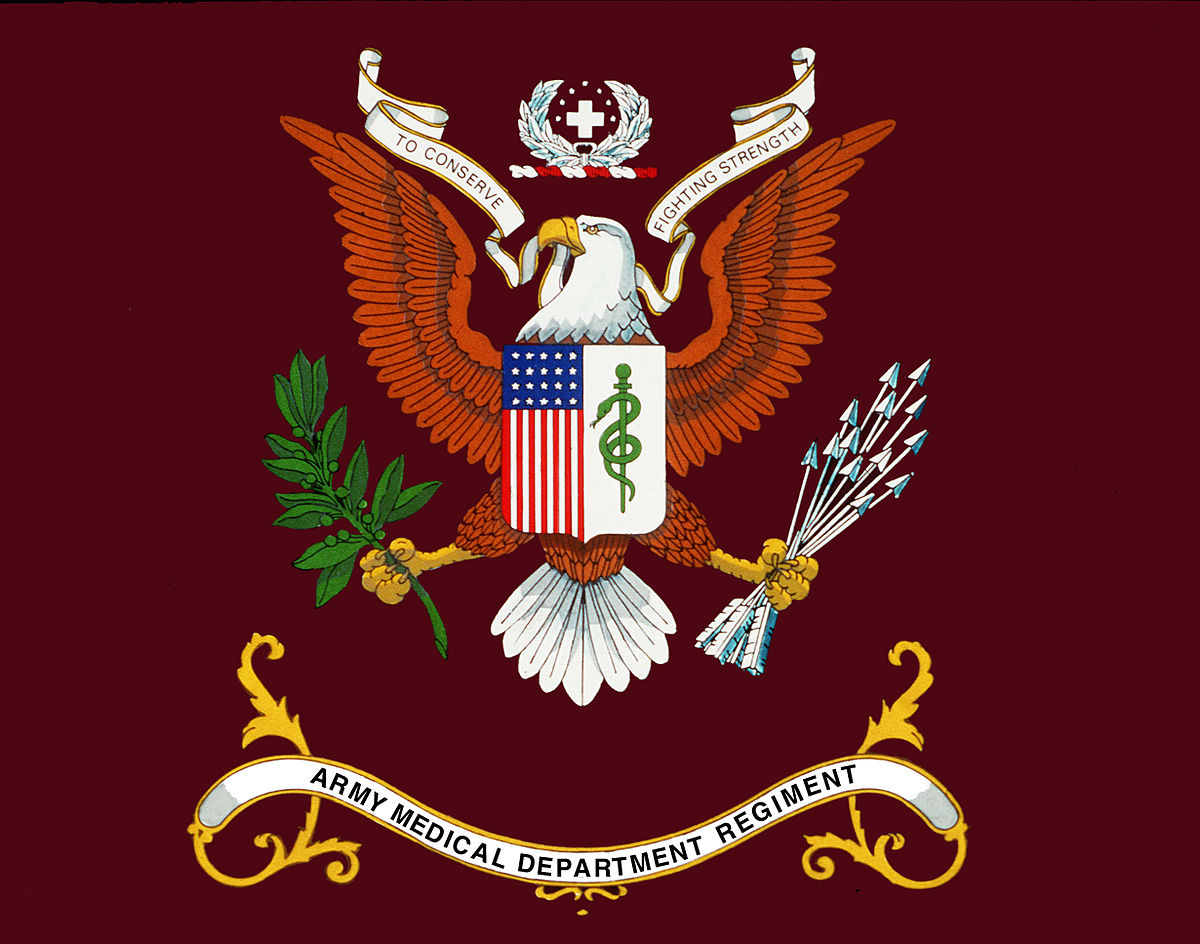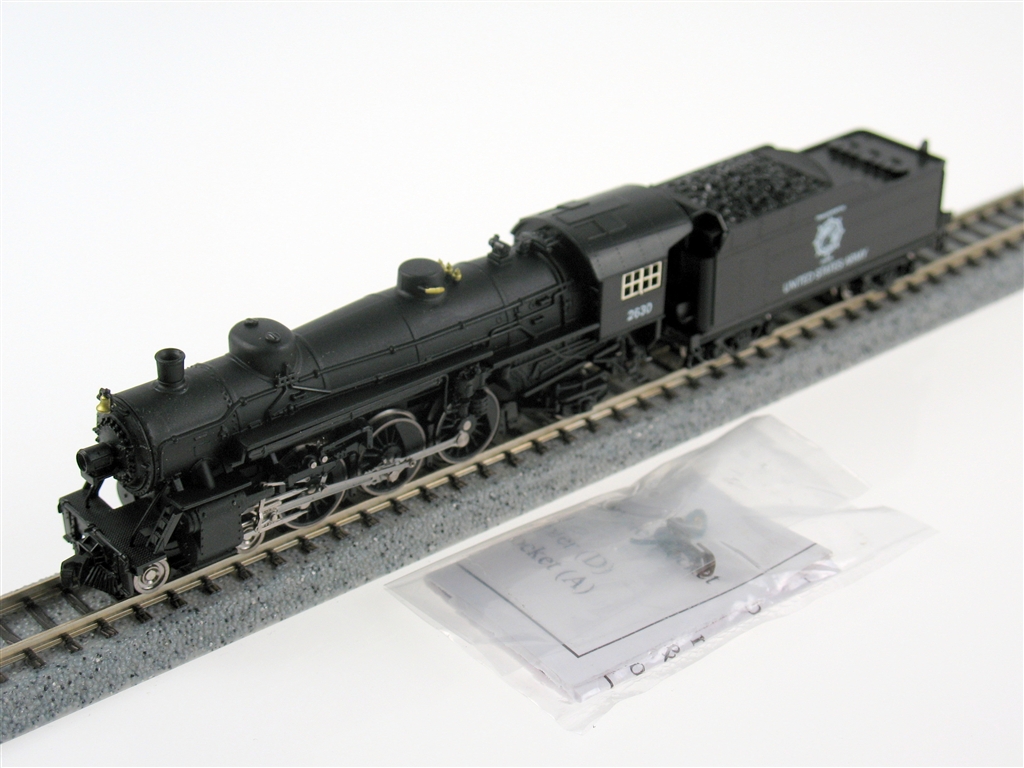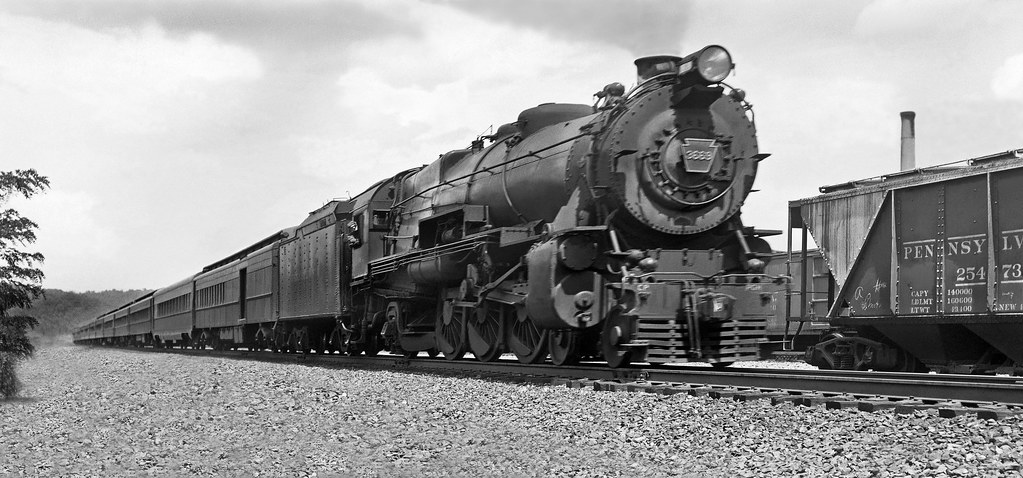Specific Item Information: Limited Edition Set #23 "US Army Hospital Train": one steam locomotive with 7 heavyweight cars.
All cars marked Pullman / US Army, with red cross on white background.
- Rivarossi Steam Locomotive 4-6-2 Heavy Pacific #5408 with 6 axle tender marked "US Army Transportation Corps"
- Surgical Unit - Combine #USA 9006
- Medical Department / Diner - #USA 9007
- Hospital Ward Car #USA 9008
- Hospital Ward Car #USA 9009
- Hospital Ward Car #USA 9010
- Hospital Ward Car #USA 9011
- Medical Department / Medical Staff only - Observation Car # USA 9012
Set also contains:
- "US Army Hospital Train, A short background" booklet
All cars marked Pullman / US Army, with red cross on white background.
- Rivarossi Steam Locomotive 4-6-2 Heavy Pacific #5408 with 6 axle tender marked "US Army Transportation Corps"
- Surgical Unit - Combine #USA 9006
- Medical Department / Diner - #USA 9007
- Hospital Ward Car #USA 9008
- Hospital Ward Car #USA 9009
- Hospital Ward Car #USA 9010
- Hospital Ward Car #USA 9011
- Medical Department / Medical Staff only - Observation Car # USA 9012
Set also contains:
- "US Army Hospital Train, A short background" booklet
Series Information: Con-Cor "Limited Edition Sets" or "Limited Edition Collector's Sets" were started after requests to 'custom paint' replicas of great passenger trains of the past. As these sets were very limited in quantity, many were sold out before they got to the retailer. While the quality of painting varied from time to time, they are a handsome addition to any collection and impressive on a layout.
With the exception of the first set, all were furnished in a wood-grained cardboard box with colored foam storage insert. For some sets, the manufacturer furnished additional cars or add-on sets.
The number of the set in the series is not printed on the box, but a listing was kept by Con-Cor and available as print-out in the most recent sets or on the (former) Con-Cor website.
Sets #1 to #13 were without stock number; stock numbers have been assigned and printed on the side label starting with set #14.
The wood-grained cardboard box has been used for other sets called "Special Edition Set" by Con-Cor, that only received a regular stock number, but were not accounted in the "Limited Edition Set" collection.
With the exception of the first set, all were furnished in a wood-grained cardboard box with colored foam storage insert. For some sets, the manufacturer furnished additional cars or add-on sets.
The number of the set in the series is not printed on the box, but a listing was kept by Con-Cor and available as print-out in the most recent sets or on the (former) Con-Cor website.
Sets #1 to #13 were without stock number; stock numbers have been assigned and printed on the side label starting with set #14.
The wood-grained cardboard box has been used for other sets called "Special Edition Set" by Con-Cor, that only received a regular stock number, but were not accounted in the "Limited Edition Set" collection.
Prototype History: During the transition period (1939 - 1957), it was common to see both steam and diesel motive power on North American railroads. However, it wasn't the case that the only steam locomotives were leftovers from the war. Many new model steam engines were produced during this period. These were the latest and best technology that steam technology produced. These were especially common on coal hailing routes where fuel was plentiful, but steam was also common on passenger routes.
One example was the Norfolk and Western J class. These pulled some of their flagship named trains such as the Pochontas, Powhattan Arrow and the Cavalier. Steam passenger service continued well into the 1950s when N&W started the dieselization process.
One example was the Norfolk and Western J class. These pulled some of their flagship named trains such as the Pochontas, Powhattan Arrow and the Cavalier. Steam passenger service continued well into the 1950s when N&W started the dieselization process.
Road Name History: he Army Medical Department of the U.S. Army – known as the AMEDD; formerly named the Army Medical Service, AMS – comprises the Army's six medical Special Branches (or "Corps") of officers and its enlisted medical soldiers. It was established as the "Army Hospital" in July 1775 to coordinate the medical care required by the Continental Army during the Revolutionary War. The AMEDD is led by the Surgeon General of the U.S. Army, a lieutenant general.
Read more on Wikipedia
Read more on Wikipedia
Brand/Importer Information: Con-Cor has been in business since 1962. Many things have changed over time as originally they were a complete manufacturing operation in the USA and at one time had upwards of 45 employees. They not only designed the models,but they also built their own molds, did injection molding, painting, printing and packaging on their models.
Currently, most of their manufacturing has been moved overseas and now they import 90% of their products as totally finished goods, or in finished components. They only do some incidental manufacturing today within the USA.
Important Note: The Con-Cor product numbering can be very confusing. Please see here in the article how to properly enter Con-Cor stock numbers in the TroveStar database.
Currently, most of their manufacturing has been moved overseas and now they import 90% of their products as totally finished goods, or in finished components. They only do some incidental manufacturing today within the USA.
Important Note: The Con-Cor product numbering can be very confusing. Please see here in the article how to properly enter Con-Cor stock numbers in the TroveStar database.
Item created by: Alain LM on 2019-05-17 13:37:12. Last edited by Alain LM on 2020-05-30 12:16:31
If you see errors or missing data in this entry, please feel free to log in and edit it. Anyone with a Gmail account can log in instantly.
If you see errors or missing data in this entry, please feel free to log in and edit it. Anyone with a Gmail account can log in instantly.


